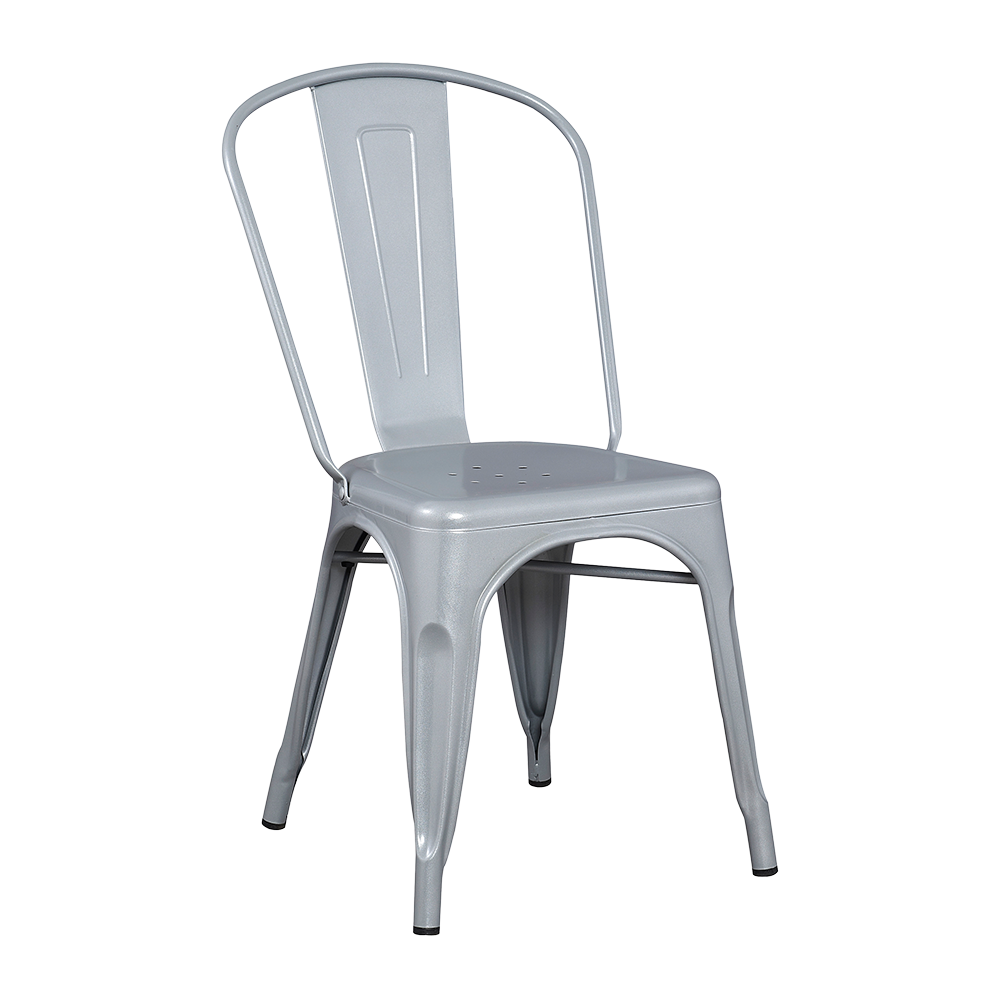2024-07-11
Metal dining chairs are a popular choice for both indoor and outdoor use due to their durability and aesthetic appeal. However, when placed outdoors, these chairs are exposed to various environmental elements that can potentially affect their color or finish over time. Understanding how prolonged outdoor use impacts metal dining chairs can help you make an informed decision on their suitability for your outdoor space.
1. Sunlight and UV Exposure:
Direct sunlight and UV rays are primary factors that can affect the color and finish of metal dining chairs. Over time, prolonged exposure to sunlight can cause the color of the chair's finish to fade. This is particularly noticeable with darker colors and finishes that are not UV-resistant. To mitigate this effect, look for chairs that feature UV-resistant paints or coatings. These specialized coatings are formulated to withstand UV exposure and maintain color vibrancy over longer periods.
2. Moisture and Humidity:
Outdoor environments expose metal chairs to moisture from rain, dew, and humidity. Without proper protection, moisture can lead to corrosion or rusting of the metal surface. Chairs with a durable powder-coated finish or made from rust-resistant materials like stainless steel or aluminum are better equipped to withstand these conditions. Regular maintenance, such as wiping down the chairs and applying protective coatings as needed, helps prevent moisture-related damage and preserves the chair's finish.

3. Environmental Factors:
Outdoor metal chairs are also susceptible to environmental pollutants and airborne particles. Pollutants in the air, as well as salt in coastal areas, can contribute to deterioration of the chair's finish if not adequately protected. Choosing chairs with a robust protective finish and conducting routine cleaning to remove dirt and pollutants can help maintain their appearance and extend their lifespan.
Tips for Preserving Metal dining chairs Outdoors:
Choose Quality Finishes: Opt for chairs with high-quality powder-coated finishes or UV-resistant paints to ensure color retention and resistance to fading.
Select Weather-resistant Materials: Consider chairs made from stainless steel, aluminum, or treated metals that offer enhanced resistance to rust and corrosion.
Regular Cleaning and Maintenance: Implement a regular cleaning schedule to remove dirt, debris, and environmental pollutants. Use mild soap and water to clean the chairs, and avoid harsh chemicals that may damage the finish.
Protective Coatings: Apply protective coatings or treatments recommended by the manufacturer to enhance durability and weather resistance.
Cover or Store When Not in Use: If possible, cover the chairs during periods of non-use or store them indoors to shield them from prolonged exposure to harsh weather conditions.